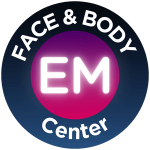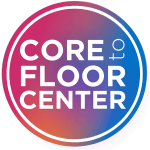
Emsculpt for Diastasis Recti: What it Is & How Emsculpt and Other Treatments Can Help
Millions of women worldwide struggle with Diasastis Recti. But what exactly is this ab separation? What causes it? In this article we dive into exactly what Disastasis Recti is, how it occurs, and the different ways you can treat this common ab separation disorder:
What is Diastasis Recti?
Diastasis recti, commonly developing during pregnancy, is the separation of the rectus muscles, also known as the six-pack ab muscles. This occurs when the growing uterus stretches these muscles, causing the two large muscles that meet in the middle of the abdomen to separate abnormally.
During pregnancy, you may not notice the change, but post-pregnancy, a “belly bulge” is a tell-tale sign. Other non-visible symptoms can include lower back pain, urinary incontinence, and constipation.
What Causes Diastasis Recti?
Diastasis recti occurs when the connective tissue in the abdomen becomes stretched and weakened, leading to a gap between the abdominal muscles at the vertical midline. This separation is most commonly experienced by women after pregnancy or by individuals who have undergone rapid weight gain or loss.
Does it Go Away on Its Own?
In most cases, diastasis recti does not correct itself. Even with consistent exercise, many patients find it challenging or even impossible to return their abdominal muscles to their original position and strength. In fact, some at-home Diastasis Recti exercises can actually worsen the condition.
How to Treat Diastasis Recti Ab Seperation
Now that we know what to look out for, how do we treat it? The woman’s body is remarkable! Depending on the severity of the separation, a diastasis often recovers naturally within the first six months post-pregnancy.
However, if it doesn’t go away on its own there are effective treatments. Surgery, physical therapy, and Emsculpt for Diastasis Recti all seek to restore the rectus abdominis muscles back to their midline. The severity of separation and your particular preferences for treatment will determine the best course for you to take.
Here’s an overview of each treatment and how they help restore ab muscles after they have been separated:
Physical Therapy for Diastasis Recti
Physical therapy or physiotherapy may be successful for treating mild cases of abdominal separation. The therapy seeks to restore the muscles that were damaged during pregnancy by strengthening the core and targeting the deep muscles of the abdominal wall and pelvic floor.
However, this route does not involve your typical ab workout. In fact, stomach exercises like crunches and situps may exacerbate the separation. Thus, women should seek the advice of a medical professional on how to properly strengthen their abs muscles after giving birth.
Diastasis Recti Surgery
For severe cases of Diastasis Recti, surgical intervention may be necessary. The degree of surgical intervention depends on the severity of the problem.
Ab separation is usually treated with a tummy tuck. However, this condition is often not covered by medical insurance, which considers the tummy tuck a cosmetic, thus an elective procedure.
Depending on your surgeon, location, and other factors, tummy tucks can range from $8,000 to $12,000 on average.
Using Emsculpt for Diastasis Recti
Emsculpt is a new body contouring treatment that enhances muscle mass and tone. The novel therapy utilizes HIFEM or Highly Focused Electromagnetic Energy to stimulate powerful muscle contractions. A single, 30-minute treatment induces 20,000 contractions in the abdomen.
Just like manual exercise, these contractions stress the muscles, forcing the tissue to adapt. To respond to the strain of these contractions, the body produces new muscle tissue (hyperplasia) and enhances existing muscle fibers (hypertrophy.)
Besides chiseling the abdomen for a washboard stomach, Emsculpt can strengthen the core. Treatments target the major muscles of the abdominal wall, including those involved in diastasis recti. Supramaximal contractions encourage the body to rejuvenate the rectus abdomen muscles, making them bigger and stronger.
This rejuvenation helps close the gap created by diastasis recti. This is supported by clinical studies which show Emsculpt for Diastasis Recti results in a significant reduction of ab separation.
The studies demonstrate that Emsculpt improves diastasis recti by strengthening the abdominal wall. One study, published in the journal of Lasers in Surgery and Medicine, found:
“Analysis…showed a statistically significant average 18.6% reduction of adipose tissue thickness, 15.4% increase in rectus abdominis muscle thickness, and 10.4% reduction in rectus abdominus separation (diastasis recti).”
Celebs Who Use Emsculpt for Diastasis Recti
Many celebrities rave about their love for Emsculpt and how it has helped them restore their bodies after pregnancy. One such celeb, Drew Barrymore, is very vocal about her love for Emsculpt and how it has helped her body recover post-partum. In fact, she is now a proud Emsculpt NEO partner with BTL Aesthetics.
The actress had diastasis recti during her pregnancies with both of her daughters and her core never went back together.
“I love exercising, but after two kids, I kept getting injured because I just did not have a core,” Barrymore, a now spokesperson for Emsculpt, tells PEOPLE. “My midsection was like a fish tank, and I just kept getting sidelined.”
Barrymore says that she would want to work out, but because of the problems with her stomach, she would “be completely messed up” afterward and have to stop again. “I just could not find that good balance.”
Barrymore is not alone. Several women struggle with ab separation after pregnancy, and their core never fully recovers post-partum. Thankfully, treatments like Emsculpt provide a fully nonsurgical, noninvasive way to work, tone, and heal the stomach muscles.
Other Ways Emsculpt Helps Postpartum Women
Even if you do not suffer from Diastasis Recti, Emsculpt helps restore the appearance of your abdomen after giving birth.
One study, “Abdominal Remodeling in Postpartum Women by Using a High-intensity Focused Electromagnetic (HIFEM) Procedure,” evaluated “whether HIFEM technology can positively affect abdominal appearance in postpartum women.”
Noting significant improvements in muscle thickness and notable decreases in adipose tissue (belly fat), the researchers found: “The [EMSCULPT] procedure appears to be effective in producing positive abdominal remodeling in women after childbirth.” This occurs “by reducing abdominal separation and fat thickness and increasing abdominal muscle mass.”
The study concluded, “ Our results suggest that postpartum women may achieve greater improvements with the HIFEM procedure, compared to the general population, and that the HIFEM procedure may yield better results than abdominal exercise programs in this patient population. “
Emsculpt Near Me in Massachusetts
If you suffer from abdominal separation after pregnancy, Emsculpt for diastasis recti in Massachusetts may be the ideal solution for you. Learn more about the new muscle-building treatment by contacting Dr. Julia Edelman at the New England Center for Body Sculpting to schedule a free consultation. Reach out to Dr. Edelman online by filling out the form below. Or call 508 947-2852 today to schedule a consult.
SCHEDULE A FREE EMSCULPT CONSULTATION
Please call 508 947-2852 or fill out the form below.
By submitting this form you agree to be contacted via phone/text/email.
SOURCES:
Jacob, Carolyn, Rank, Brittany. “Abdominal Remodeling in Postpartum Women by Using a High-intensity Focused Electromagnetic (HIFEM) Procedure: An Investigational Magnetic Resonance Imaging (MRI) Pilot Study.” The Journal of Clinical and Aesthetic Dermatology. 2020;13(4 Suppl):S16–S20. LINK.
Kinney, Brian M, and Paula Lozanova. “High intensity focused electromagnetic therapy evaluated by magnetic resonance imaging: Safety and efficacy study of a dual tissue effect based non-invasive abdominal body shaping.” Lasers in surgery and medicine vol. 51,1 (2019): 40-46. doi:10.1002/lsm.23024. LINK.







